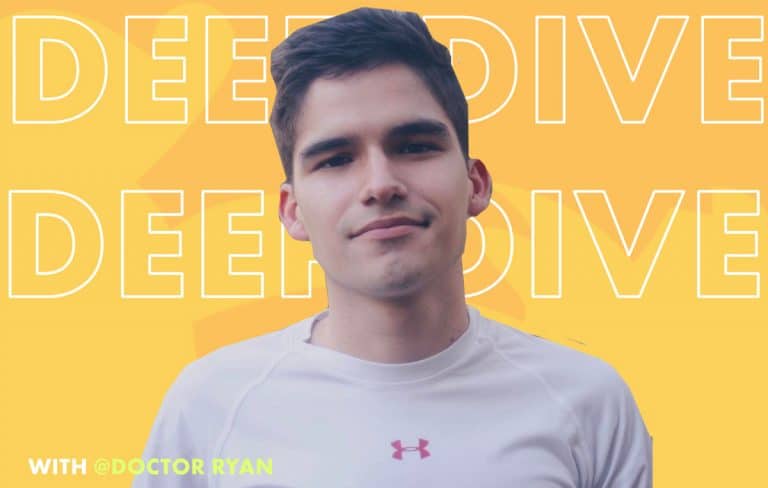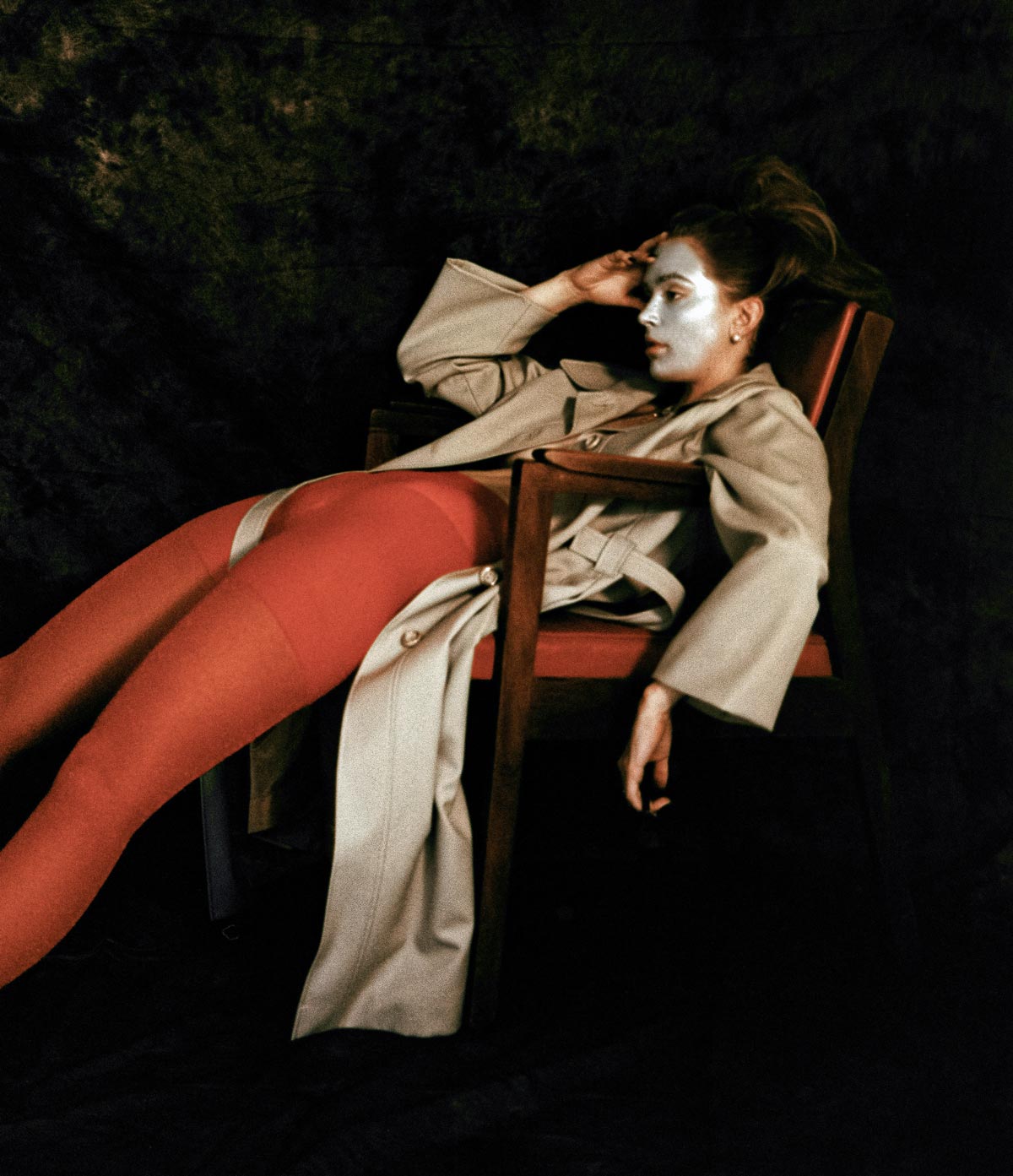Defining the fine line between TikTok teen content creators and child labour with @Doctor.Ryan

2020 has been a life-changing year for everyone, there is no arguing that. The pandemic reinforced an already existing reliance on technology, and for many of us, the amount of time we spend on our social media channels has had a worrying increase. 2020 will also forever be the year that made the video-sharing app TikTok skyrocket in popularity. As an app predominantly used by young people—the age limit currently stands at 13 years old, even though there have been accounts of much younger kids using its services—TikTok’s workforce highly relies on the youth. What kind of impact does the app have on the new generation’s mental health, and what is TikTok doing to protect its youngest users? Screen Shot spoke to TikTok creator @Doctor.Ryan to found out.
Before the pandemic, I didn’t really care for TikTok. Like so many people, I ended up downloading it in March at the very start of quarantine after being encouraged by my friends, as a way to distract myself from COVID-19 anxiety and intrusive thoughts about the uncertainty of our lives, and it worked. Fast forward today, it has become my most used app.

TikTok for the youth
It would be naive to ignore TikTok’s influence on gen Z trends and culture, and just how determinative this year was to the app’s success. TikTok has had an immense influence over the music industry, it has played a role on how we view and interact with politics, it has even influenced fashion trends as well as our consumer habits (remember when everyone was making whipped coffee at the start of quarantine, or how at the start of summer, rollerblades were selling out everywhere? You have TikTok to thank that for).
As much as TikTok serves as a space that allows us, gen Zers, to consume and participate in all of these trends, this relationship is not one-sided; gen Zers make up for almost half of the app’s users, and the truth is, without the youth, TikTok would not be where it is today.
If you look at some of TikTok’s top content creators, one recurring similarity you will find is that they are all really young. Dixie D’Amelio is 19, Chase Hudson, aka @lilhuddy turned 18 earlier this year, Addison Rae has only turned 20 this October, and Charli D’Amelio, TikTok’s most-followed creator, is only 16. But another similarity these creators all share is just how quickly they have accumulated their fame on the app.
The price of fame
As glamorous and enchanting as fame can be, it also comes with its own side effects. Lack of boundaries and privacy invasion, constant public scrutiny, incessant media coverage and isolation are just a few examples of these, and they can all have an incredibly negative impact on someone’s mental health.
In many ways, these young TikTok stars share a strong resemblance with other child stars of the past, if not being the 2020 equivalent of them—think Disney Channel circa 2010, or Lindsay Lohan in the 2000s. Entering fame at a young age often means you miss out on some of the most formative and influential years of your life; childhood, and later, teenhood, which can have irreversible consequences on your mental state.
In addition to this, having your appearance (which is something that is constantly changing at that age) under constant speculation adds immense pressure. For instance, Demi Lovato, a pop singer and former Disney star has admitted that it is this pressure that led to her eating disorder and substance abuse.
Game of Thrones’ Sophie Turner admitted to considering suicide as a result of being overwhelmed by her sudden fame at such a young age. Sadly, Lovato and Turner’s experiences are not unique, but are simply the reality for many young stars. So how is it any different for famous TikTokers? Well, it isn’t.
Ryan Luna, aka Future Doctor Ryan, is a gen Z TikTok creator and final year medical student going into psychiatry, whose viral content focuses on the intersection of popular culture and psychiatry. When asked the same question, Luna tells Screen Shot, “I think one big difference is that TikTokers have freedom of expression. So they’re making their own show. They’re not filling in someone else’s vision.”
Of course, one can argue that influencers, no matter their age, have freedom and control over their content: it is how they build their platforms in the first place (that is if they are not micromanaged by the talent or PR companies that sign them). With that logic in mind, nobody but themselves can be held accountable for their own actions—but what happens if you are a teen without much life experience?
The impact of cancel culture
“You can really mess up. That’s the one thing about a kid; you could do something that you totally regret and it’s out there forever,” explains Luna. Growing up in the spotlight often means that every single mistake, big or small, that you make will be televised, scrutinised, and dramatised. And let’s be honest here, you are bound to make one—we all do—but the difference between us and celebrities is that nobody is there to witness our downfall, cancel us for it, or worse, turn us into a meme.
“I think having fame can be a trauma in a way, as it can definitely stunt people,” continues Luna. Not only do TikTok stars have to face the basic hurdles of fame, but they experience this during an era of constant digital surveillance and cancel culture. When your entire career revolves around solely existing on social media, people often start believing that they are entitled to access every aspect of your life. If this access is what keeps you relevant and keeps your career going, you can only imagine what that can do to someone’s mental health.
Just last month, both of the D’Amelio sisters received major backlash following a video they posted as part of their YouTube series, Dinner with the D’Amelios. In case you don’t know what I am talking about, Charli, Dixie and their parents had dinner with beauty YouTuber and make-up artist James Charles, which was prepared by their personal chef. Dixie D’Amelio allegedly threw up the snail that she tried to eat while Charli asked if she could have dino nuggets instead, and mentioned that it would be “cool to hit 100 million followers.” This resulted in Charli losing over 500,000 followers (even though she has since surpassed her 100 million goal), and the internet and Trisha Paytas coming after them. Bear in mind that Paytas is double Charli’s age.
Both of the sisters should be held accountable for their actions, but cancelling them over this seems somewhat uncalled for. Cancel culture is unreasonable to begin with—but in this situation, the victims of it happen to be two young teenage girls. In an emotional Instagram Live, Charli professed “If this is the community that I’ve put myself in, I don’t know if I want to do that anymore.”
Voir cette publication sur Instagram
The unethical side of TikTok
The problem lies in the fact that TikTok benefits from the fame of people like Charli and Dixie. It benefits from any child or teenager using the app. According to Statista, as of June 2020, users aged 10 to 19 account for 32.5 per cent of TikTok users in the US alone. As a result, TikTok largely depends not only on the content consumed by this age group, but also made by. In many ways, it can be argued that the entire industry that relies on underage influencers, really just relies on child labour.
“I saw the evolution of technology, I was born in 1996, but there are kids that don’t have that,” explains Luna. “I think it really rewires people’s psychology. Like, how much access do you have to the internet? What are you looking at? How are you communicating? The thing is, platforms such as TikTok don’t really have any clear regulations set in place to protect the likes of Charli D’Amelio. And that is a cause for concern.”
Interestingly enough, sites such as YouTube have been monetising off younger influencers for far longer than TikTok even existed. Some of the most popular YouTube channels consist of family vloggers making content with the help of their children—children who are often too young to comprehend just how large their viewership numbers are.
“Have you ever deleted a picture of yourself on Facebook or something like that personally?” Luna asks me. “Imagine that that picture wasn’t just a picture. It was a video of your entire week log… and millions of people have seen it. Parents made a lot of money off of it and it can’t be deleted,” he explains.
Teenage TikTok stars at least made the conscious decision to appear on the internet, even if they weren’t fully aware of what they may be getting themselves into. Younger children such as toddlers and babies are unable to consent to this, which raises a huge ethical question. And these platforms benefit from all of this.
So what are the solutions? According to Luna, de-monetising the content of child influencers is one of them. Stronger regulations must certainly be put in place, and all social media platforms should definitely have educational resources available for all of their young content creators, whether they have 1 follower or 100 million.
But more than that, as internet users we should be a lot more empathetic. Yes, engaging in TikTok drama can be hard to resist but it is important for us to remember that behind the TikTok dances and trends, there are teenagers with real feelings and emotions. If we want to avoid another Britney Spears meltdown, we need to act now.




